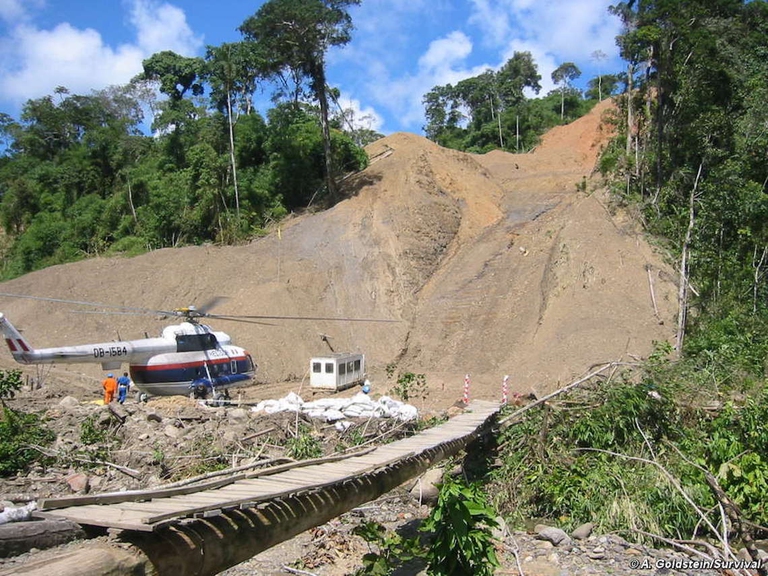
A special report from the Yuqui territory delves deep into the dreams, challenges, joys and sadness of one of Bolivia’s most vulnerable indigenous groups.
One child has already died due to mercury poisoning, which has put the safety of up to 80% of the indigenous Nahua tribe, who live in the Peruvian Amazon, in jeopardy. The circumstances as to why the majority of the community presents symptoms of intoxication caused by the substance remain unclear. Its high levels in
One child has already died due to mercury poisoning, which has put the safety of up to 80% of the indigenous Nahua tribe, who live in the Peruvian Amazon, in jeopardy. The circumstances as to why the majority of the community presents symptoms of intoxication caused by the substance remain unclear.
Its high levels in the area may be related to the expansion of the Camisea gas project, one of the largest energy projects in the country. Since recent contact with the Nahua people, who live in voluntary isolation, has been made, they have been suffering severe health problems such as respiratory infections, anaemia and acute kidney insufficiency, amongst others.
Discovered in the 1980s in the heart of the Amazon rainforest in southeastern Peru, the natural gas field adjacent to an indigenous reserve was expected to turn the country into the king of natural gas. A 2008 report suggests that gas extraction could earn it 230 million dollars annually and 90 million dollars in income tax revenue.
Last month the Interethnic Association of Peruvian Rainforest Development (AIDESEP), one of the leading human rights organisations in the Amazon, submitted a petition to the Ministry of Culture. It asked it to publish the governmental study conducted in March 2015 that assesses the level of mercury in the area and analyze the type of mercury affecting the community in order for it to receive adequate treatment.
Indigenous people living in voluntary isolation are defined under international law as native peoples who don’t engage in relations with non-indigenous groups, whereas the term indigenous peoples “in initial contact” is used to describe those communities that have sporadic exchanges with the non-native population. It is estimated that there are approximately two hundred communities inhabited by around 10,000 individuals living in voluntary isolation in the Americas.
Siamo anche su WhatsApp. Segui il canale ufficiale LifeGate per restare aggiornata, aggiornato sulle ultime notizie e sulle nostre attività.
![]()
Quest'opera è distribuita con Licenza Creative Commons Attribuzione - Non commerciale - Non opere derivate 4.0 Internazionale.
A special report from the Yuqui territory delves deep into the dreams, challenges, joys and sadness of one of Bolivia’s most vulnerable indigenous groups.
The Yuqui people of the Bolivian Amazon fight not only to survive in the face of settlers, logging and Covid-19, but to preserve their culture and identity.
Jair Bolsonaro is accused of crimes against humanity for persecuting indigenous Brazilians and destroying the Amazon. We speak to William Bourdon and Charly Salkazanov, the lawyers bringing the case before the ICC.
Activists hail the decision not to hold the 2023 World Anthropology Congress at a controversial Indian school for tribal children as originally planned.
Autumn Peltier is a water defender who began her fight for indigenous Canadians’ right to clean drinking water when she was only eight years old.
The pandemic threatens some of the world’s most endangered indigenous peoples, such as the Great Andamanese of the Andaman and Nicobar Islands in India.
The Upopoy National Ainu Museum has finally opened. With it the indigenous people of Hokkaido are gaining recognition but not access to fundamental rights.
A video shows the violent arrest of indigenous Chief Allan Adam, who was beaten by two Royal Canadian Mounted Police (RCMP) officers.







